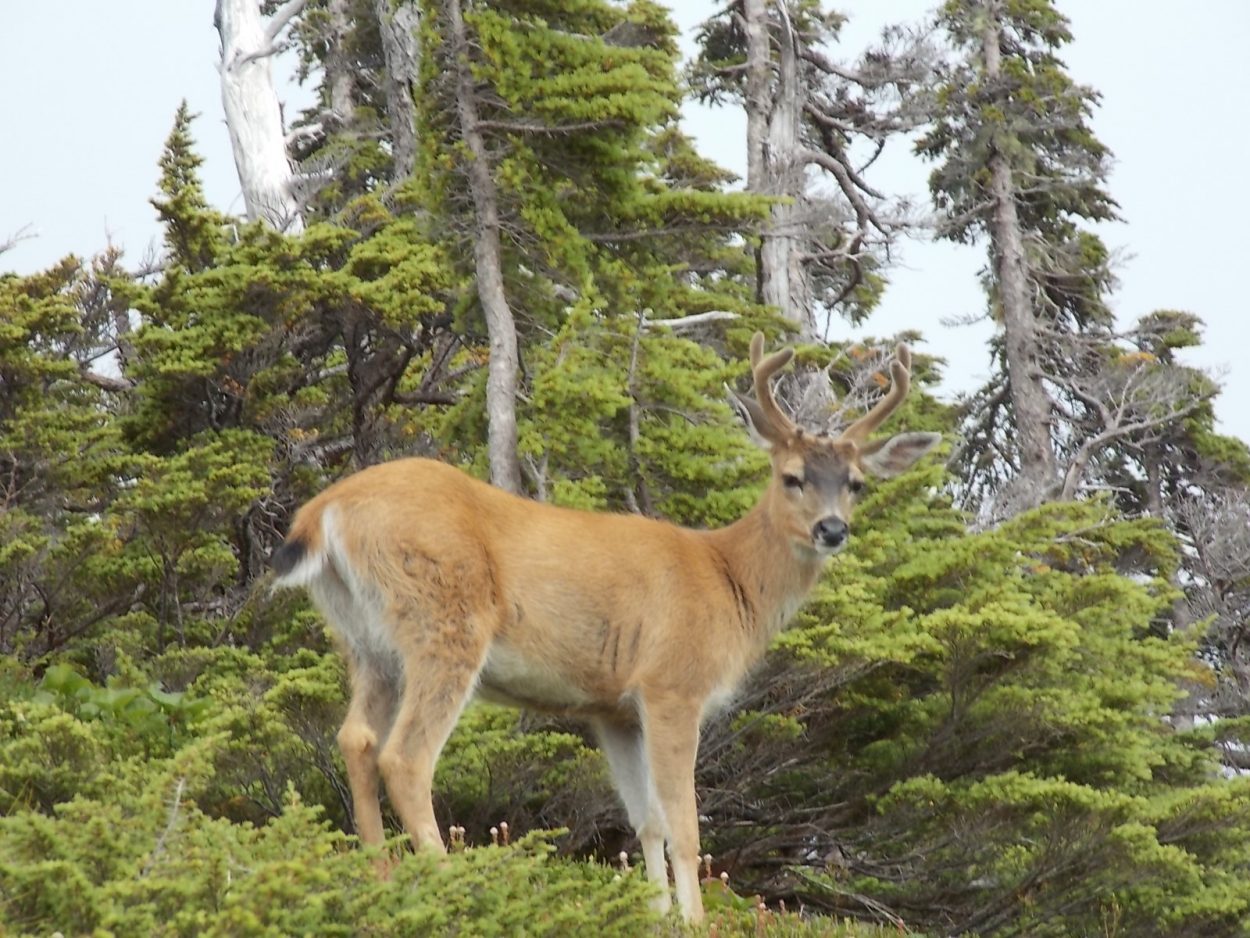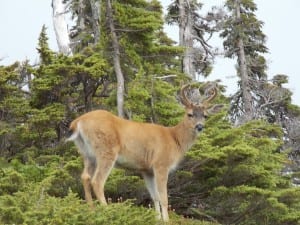The U.S. Forest Service will have to do more work on plans for four timber sales on the Tongass National Forest in Southeast Alaska. That’s after a federal judge last month sent the sale decisions back to the agency for more analysis or public comment on the proposed logging’s potential impact to deer habitat.
Two of the proposed sales are near Petersburg. Overlook is on Mitkof Island and Scott Peak is on Kupreanof Island. The other sales are Soda Nick, near Hydaburg, and Traitors Cove north of Ketchikan.
Larry Edwards is a forest campaigner for Greenpeace in Sitka and said the organization is pleased with the judge’s decision. “It doesn’t give the Forest Service any license to go ahead with these projects,” Edwards said. “They’ve got a lot of work and a lot of explaining to do and we don’t think they can pull it off.”
Separate environmental reviews of the four sales were approved by the Forest Service in 2006 and 2007. Greenpeace and Cascadia Wildlands Project sued the following year and the four projects have been in and out of federal courts since. At issue is the U.S. Forest Service’s model for evaluating deer habitat and the number of deer that different areas of the forest can theoretically sustain. The Forest Service set a guideline for habitat carrying capacity of 18 deer per square mile, as sufficient to sustain wolf populations and needs of people hunting.
The agency’s 2008 Tongass Land Management Plan changed the agency’s model for deer habitat. It also added wording to say that 18 deer per square mile would be required “where possible.” Edwards thinks that language should not give the agency justification to offer more timber sales in poor habitat. “Now we interpret that as saying even if it’s not possible, if they’ve already suppressed the habitat capability below that level or in some places on the Tongass it never was that high to begin with, that still does give the agency license to go in and make the habitat and its ability to support deer even worse,” he said. “That in those cases they need to be very careful and not suppress that carrying capacity even further.”
Edwards said the deer carrying capacity in the four areas is already below the guideline level and will be reduced further with the proposed logging.
In his September 26th decision, U.S. District court judge Ralph Beistline ruled that the Forest Service had to redo deer its model analysis on the four projects under the guidelines of the 1997 Forest Plan. That was the forest plan and guidelines that were in place when the timber sale plans were approved. Alternatively he ruled the agency could apply the 2008 forest plan if it re-opened the decision making process and re-issued the four projects with public notice and opportunity for public comment.
Greenpeace and Cascadia wanted the court to put aside the original four project plans but Beistline ruled that was not necessary. Forest Service spokesperson Carol Lagodich said this week the agency was reviewing the decision and had not yet determined the next step for the four sales.











